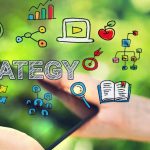3 Great Ways To Think About Enterprise UX
ERP today is a standard fixture in the lives of many professionals who work in large organizations. Many Fortune 1,000 companies have enterprise software to support most transaction-oriented work, from accounting to sales. Even smaller companies are now adopting ERP, mainly due to the efficiencies of the SaaS (software as a service) model that makes it affordable. This means professionals spend increasing amounts of time looking at screens, feeding information into some variant on the enterprise software theme! This is where user experience (UX) comes into play.
Unfortunately, many organizations still see UX design as a waste of time and money. To our minds, the argument is simple. If your users need to click ten times to get to their destination, you are hampering not just experience but productivity. Further, as the workforce gets younger, with the arrival ‘Generation Y’, accustomed as they are to the luxury of easy-to-use apps, there is a greater demand for software that is similarly user-friendly.
As makers of ERP, we know that designing software for an enterprise is never simple because there are multiple stakeholders. Applying proper UX to enterprise software solutions will, therefore, bring with it obstacles that you might not have in a consumer scenario.
Here are things to think about as you take the plunge into a more user-friendly software experience for your enterprise.
1. Think Automation
For the best enterprise UX, look for patterns related to repeated use of certain functionalities. If large groups of people are performing the same complex actions over and over, think of ways to design the system to make these processes faster and easier. For example, if there is a set of order details to be put into a system, and you have thousands of entries in a day, how can you make that quicker and less tedious? What will that cost you and how much of employee time does it cut down? What can that mean in efficiency results for your bottom line?
2. Think Mobile
By far the biggest impact on user experience is made by giving users immediate and portable access to the information they need to do their jobs better. In enterprise situations, therefore, mobile compatibility is a big win. When employees have information at their fingertips, they become more connected, more engaged and more efficient. It addition to better service to customers, this means costs savings for the company as you don’t have massive facilities kept running late into the night but you still have productive employees.
3. Think Easy
Designing ERP so that it can be quickly learned is a definite must. Adoption increases in leaps and bounds when the learning curve is small. Especially when combined with demonstrable increases in efficiency. Designing software to work well with onboard training system, so new employees can ‘hit the ground running’, is something else to think about.
Remember that many people see UX design as a way to make things look good. While visual appeal is important, it means very little without function that delivers value for your customer. Let the question ‘what’s the user’s goal?’ be your guiding light. Then think about the actions needed to reach that goal, and make them intuitive and easy to do. Possible for consumer apps, and certainly possible for the enterprise!





